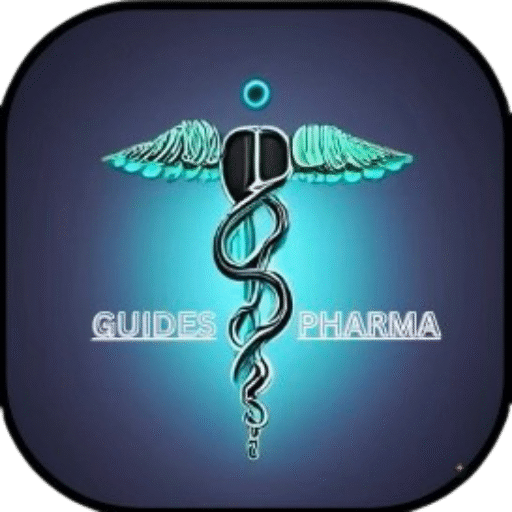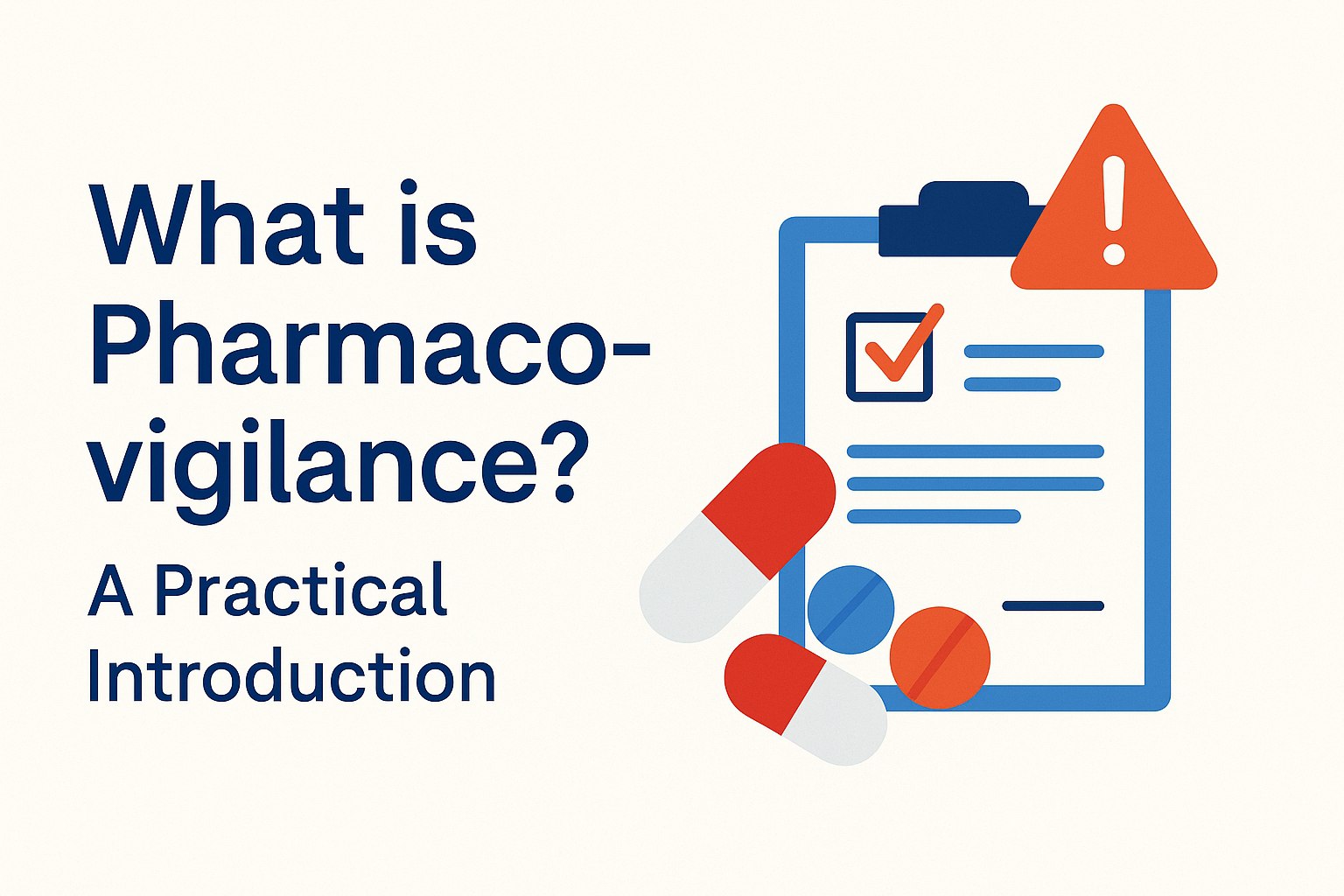Table of Contents
ToggleIntroduction: What is Pharmacovigilance?
If you’re stepping into the world of pharmacy or healthcare, you might wonder: What is pharmacovigilance?
Pharmacovigilance, often shortened as PV, refers to the science and activities involved in the detection, assessment, understanding, and prevention of adverse effects or any other drug-related problems. It plays a key role in ensuring the safety and efficacy of medicines throughout their lifecycle, especially after they are approved for public use.
In simpler words, pharmacovigilance helps make sure the medicines we take don’t do more harm than good.
Why is Pharmacovigilance So Important?
To truly understand what is pharmacovigilance, you must first appreciate its importance in modern healthcare.
Here’s why pharmacovigilance matters:
1.✅ Protects Patient Safety
It helps identify adverse drug reactions (ADRs) that might not be detected in clinical trials due to limited sample size or duration.
2. ✅ Enables Early Detection of Problems
Pharmacovigilance systems enable healthcare professionals and regulatory bodies to spot signals (unusual patterns of adverse events) before they become public health issues.
3. ✅ Improves Drug Regulation
It provides data that regulatory agencies like the CDSCO (India), FDA (USA), EMA (Europe) use to make safety-related decisions — like label changes, risk warnings, or even product withdrawals.
4. ✅ Builds Public Trust
When patients know there is a system actively monitoring drug safety, it builds confidence in pharmaceutical products and companies.
How Does Pharmacovigilance Work?
Let’s break down the pharmacovigilance process into simple steps:
📌 Step 1: Data Collection
Reports of adverse events are collected from healthcare providers, patients, hospitals, or even social media and mobile apps.
📌 Step 2: Case Processing
Each report is reviewed by a trained professional called a Drug Safety Associate. The data is entered into databases like Argus Safety or VigiFlow.
📌 Step 3: Signal Detection
Large amounts of data are analyzed to identify any new, unexpected, or rare adverse effects.
📌 Step 4: Risk Assessment
Medical experts assess the seriousness, frequency, and possible causes of the events.
📌 Step 5: Regulatory Action
Based on the findings, the concerned authorities may issue safety warnings, request more research, or in extreme cases, withdraw the drug from the market.
Real-Life Example of Pharmacovigilance
Imagine a new painkiller is launched. In clinical trials, it seemed safe. But a few months after its release, multiple patients report severe stomach bleeding. These reports are collected by the National Pharmacovigilance Centre. Upon investigation, a pattern is found — the drug interacts negatively with a commonly used blood thinner.
As a result, a warning is issued, and the manufacturer updates the drug’s label to alert prescribers. This is pharmacovigilance in action — protecting public health.
Key Terms You Should Know
If you’re just starting to learn what is pharmacovigilance, here are a few basic terms to remember:
| Term | Meaning |
| ADR (Adverse Drug Reaction) | A harmful or unintended response to a drug |
| Signal | A new or known safety concern based on data trends |
| Case Narrative | A detailed report of the adverse event |
| Causality Assessment | Determining whether the drug caused the reaction |
| MedDRA | A coding system used to classify medical terms in PV |
Career Benefits of Pharmacovigilance: Why Should You Learn It?
Now that you understand what is pharmacovigilance, let’s look at how it can open career doors in the pharma industry.
🎯 1. Entry-Level Friendly
Pharmacovigilance roles like Drug Safety Associate or Case Processor are open to fresh graduates with B. Pharm, M. Pharm, BSc, MSc, MBBS, BDS, BAMS, BHMS backgrounds.
🎯 2. Growing Industry Demand
With increasing global drug approvals and monitoring regulations, pharmacovigilance jobs are growing rapidly — especially in India, the UK, and the USA.
🎯 3. High-Paying Jobs
Starting salaries in India range from ₹3–5 LPA, and senior roles can go up to ₹12–15 LPA. International salaries are much higher.
🎯 4. Hybrid & Remote Work Options
Many pharmacovigilance roles allow remote or hybrid working, especially in MNCs or IT-enabled drug safety firms.
🎯 5. Multiple Career Paths
After gaining experience, you can move into roles like:
- Signal Detection Analyst
- Medical Reviewer
- Quality Auditor
- Pharmacovigilance Manager
- Risk Management Specialist
To know more career options after B.Pharm in India click here
Where Can You Work?
Pharmacovigilance professionals are hired by:
- 🏢 Pharmaceutical companies (e.g., Pfizer, Sun Pharma, Cipla)
- 🧪 Contract Research Organizations (CROs) like IQVIA, Parexel, Covance
- 🖥️ IT companies with pharma clients (TCS, Accenture, Cognizant)
- 🌍 Government & international regulatory bodies (WHO, CDSCO)
How to Start Your Career in Pharmacovigilance
1. ✅ Understand the Basics
Read articles (like this one) to know what pharmacovigilance is and how it works.
2. 🎓 Take a Certification Course
Enroll in a short PV certification from online platforms or institutes. Many are 1 to 3 months in duration.
3. 📄 Build a Simple Resume
Highlight your academic background, interest in drug safety, and any certifications.
4. 💼 Apply for Internships or Entry-Level Roles
Start with internship or fresher jobs as a PV associate or data processor.
5.🌐 Network on LinkedIn
Follow pharmacovigilance professionals, join pharma career groups, and connect with us on LinkedIn – Guides Pharma
FAQs on Pharmacovigilance
Q1. Is pharmacovigilance only about adverse drug reactions?
No. It includes medication errors, drug misuse, lack of effect, drug interactions, and safety signals too.
Q2. Can I get a job in pharmacovigilance without prior experience?
Yes! Most companies offer on-the-job training for freshers who have strong interest and basic knowledge.
Q3. Do I need coding knowledge for PV?
No software coding is needed. But knowledge of MedDRA coding (medical terminology classification) and tools like Argus is a plus.
Final Thoughts: Why You Should Care
Understanding what is pharmacovigilance is not just academic—it’s a career advantage. With growing awareness around drug safety, the need for trained PV professionals is higher than ever.
If you’re a pharmacy, life sciences, or healthcare graduate looking for a career with purpose, growth, and stability, pharmacovigilance is an excellent path to consider.


1 thought on “What is Pharmacovigilance? 10 Essential Insights for Beginners + Career Benefits”